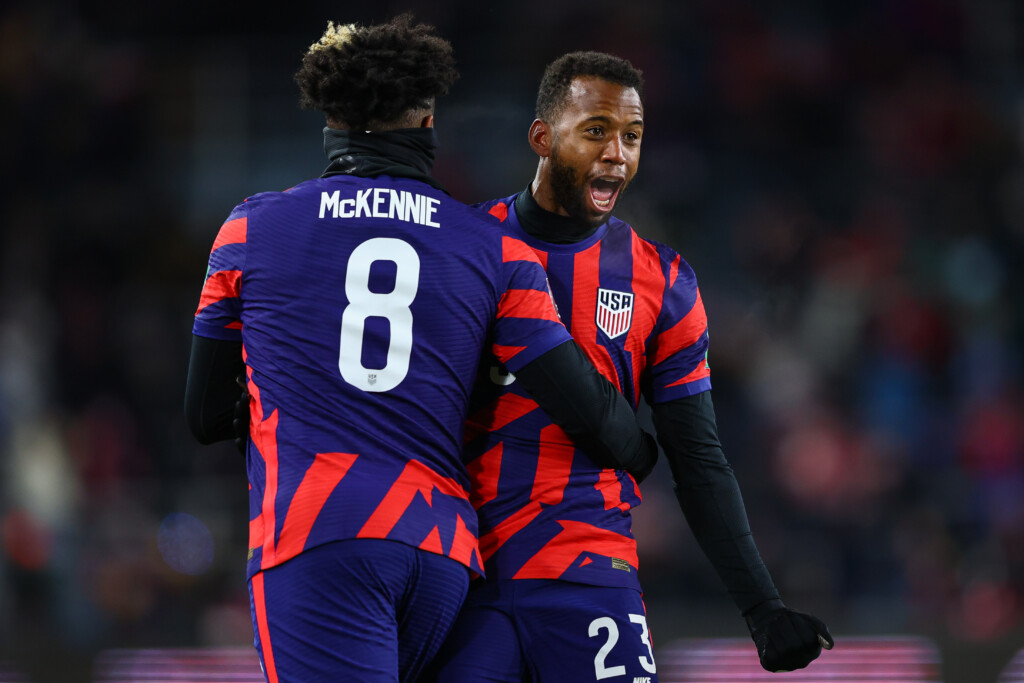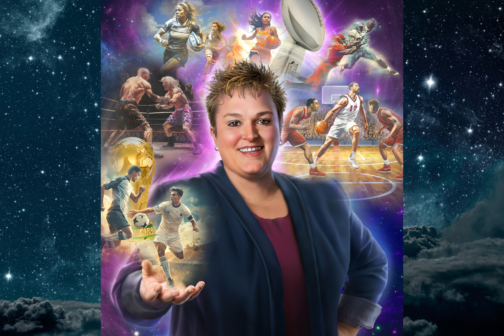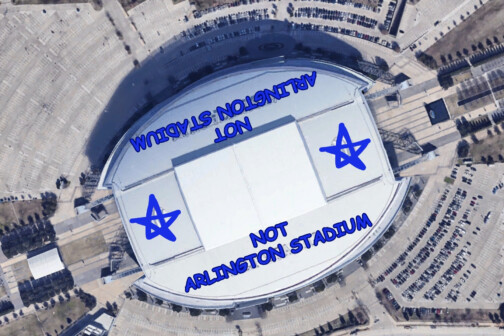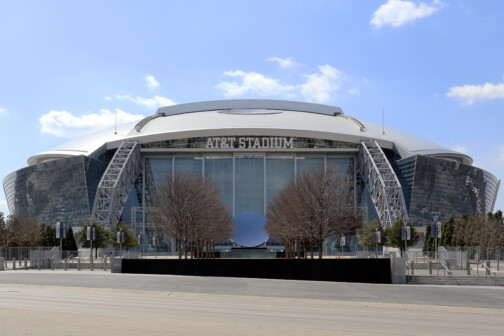As you prepare to watch England and the United States play in the men’s World Cup on Friday, try to imagine another matchup between the two countries.
The year is 2042, and FIFA is holding the 27th installment of the world’s most popular sporting event. Watering holes across the United States are packed. So is the World Cup stadium, where fans, with faces painted in red and white as well as red, white, and blue, are absolutely rabid. In fact, the fervor for men’s American soccer has never been higher because this isn’t just a group-stage game. This is the World Cup final.
It’s a rose-colored vision, certainly. The U.S. Men’s National Team’s best performance since a semifinal appearance in the first World Cup was a 2002 quarterfinal, and it didn’t even qualify for the event in 2018. But should this grand future come to fruition, one club will deserve a major share of the credit: FC Dallas.
Yes, that FC Dallas, one of just three original Major League Soccer teams to have never won the MLS Cup. FC Dallas, which has only played in one MLS Cup final, in 2010, which they lost on an own goal in extra time. This year’s World Cup roster features a single member of FC Dallas’ first team, Jesús Ferreira, which gives the club the same number of roster spots as roughly half the league.
The club’s roots, however, run much deeper. The USMNT World Cup roster includes Ferreira, 2020 U.S. Men’s Soccer Player of the Year Weston McKennie, Kellyn Acosta (a Plano native), and Shaq Moore, all of whom spent time in the FC Dallas Academy, which launched in 2008, a year before MLS mandated that every team start a similar developmental arm. The team’s system also produced also a couple of notable omissions from that roster, including Ricardo Pepi, whom FC Dallas sold in January for a reported $20 million plus bonuses, making him the most expensive American to ever sign for a European club and the third-most expensive MLS export of all time. (A fifth player on this year’s World Cup squad, Walker Zimmerman, was drafted by FC Dallas out of college and spent five seasons with the team.)
If the USMNT advances to the World Cup final in 2042—or this year, or another year in the near future—it will be because the country’s academy system has caught up with the rest of Europe. And if the country’s academy system catches up with the rest of Europe, it will be because of the pioneering impulses of FC Dallas.
“I think Dallas was a front runner,” says Omid Namazi, former head coach of the U.S. U18 men’s national team, “and everybody else sort of fell behind them.”
A few hours after U.S. Soccer announced its World Cup roster, FC Dallas president Dan Hunt sits in the corner of a glitzy Uptown restaurant considering the origins of the development program that helped shape players like McKennie, Acosta, and Ferreira. “You have to take a gigantic step back because the story of why Dallas is so far ahead of any other market is because of the Dallas Tornado,” Hunt says.
Hunt’s father, the iconic sports entrepreneur and oil family scion Lamar Hunt, founded the Tornado in 1967 as part of the fledgling North American Soccer League. The league never really caught on, folding in 1985, but the Tornado left a legacy in Dallas, infusing life into an incipient youth soccer scene. Tornado player Bobby Moffat coached local club team Flame, where Dan Hunt eventually played. Moffat’s teammate Charles DeLong coached the Longhorns and then at Jesuit, where he’s been the head coach since 1980. Other metro areas had their own youth soccer scenes, but, according to Hunt, nowhere else boasted as many highly competitive club teams with organizations like Flame, the Longhorns, Solar, the D’Feeters, and beyond. The women were even more accomplished: the Sting won FIFA’s first-ever tournament for women’s national teams in 1984.
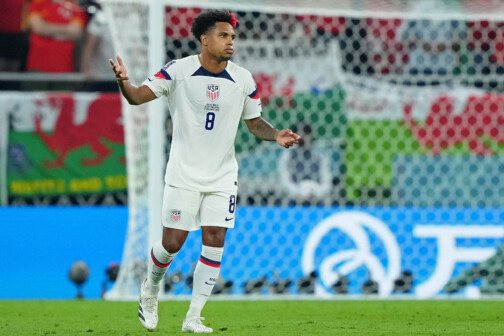
Still, while Dallas was ahead of many other U.S. cities for boys soccer, the country was decades behind Europe, where professional teams have run highly organized youth development programs for generations. Ajax, the storied Dutch side, founded its academy, De Toekomst, in 1900. Johan Cruyff, a legendary Ajax alum, helped convince FC Barcelona to start its La Masia academy in 1979. At academies like these, handpicked players as young as 7 years old would practice and progress under the tutelage of world-class coaches, whose sole goal was developing their skills. Some would go on to star for the top clubs in Europe. More broadly, however, the academies optimized talent. Dozens of academies each filled with hundreds of boys means European countries have thousands of well-trained soccer players—enough elite standouts to fill a national team plus plenty more waiting in the wings.
Chris Hayden noticed the discrepancy between Europe and the United States while playing and coaching for Dallas clubs. Young American players had too many games and too many tournaments. The coaches, despite good intentions, often cared too much about winning, incentivizing a structure in which they’d scope out the most physically advanced athletes for their teams rather than underdeveloped kids who might evolve into the best players when they matured. Tactics devolved accordingly, favoring long balls to fast runners at the expense of the methodical passing and precision movements that foster high-end technical skills. Budding stars got plenty of experience, but they might’ve had two or three peers on the same level at their club, hardly enough to undergo the repetitive challenges necessary to prepare them for the highest professional levels overseas.
“Some of those kids do turn into professional players,” Hayden says, “but it’s definitely a short-sighted project.”
In 2005, FC Dallas approached Hayden to help lead an in-house youth program. The team bought the rights to Inter Dallas, the second-largest club in North Texas at the time, featuring some 45 teams, and opened the sprawling Toyota Stadium sports complex in Frisco. Three years later, the FC Dallas Academy was born.
The goal was for the academy to prepare the most gifted players, bridging the gap between the younger FC Dallas club teams and the professional team. It would follow the model of the great European clubs, prioritizing long-range player development and offering a ladder-like system of opportunities to challenge its players, be it a move up to the next age level for games and practices all the way up to training with the first team if a young player was ready. If FC Barcelona could enroll a youth talent like Lionel Messi and, just a few years later, unleash him to wild success on its pro team, why couldn’t FC Dallas do the same in America?
The new space in Frisco was ideal for a large academy, too. The club built a locker room for academy players next to the team’s front offices, while the complex’s 17 fields gave it almost double the soccer pitches as Ajax’s campus and more than most of their MLS peers.
“What FC Dallas did is they were trailblazers in starting things before other clubs were ready to make that step,” says Mikey Varas, a former FC Dallas assistant and current coach of the U.S. U20 Men’s National Team.
The academy soon filled up with the best area talent, as parents sought opportunities for their children. FC Dallas personnel scouted the rest. About a year after the academy launched, Hayden remembers inviting an especially prodigious player from Little Elm and his friend to an academy practice with older kids. Rather than warm up with his friend, the boy, maybe 11 years old at the time, approached team captain Martin Salas to pass the ball around. To Hayden, the behavior showed that “even in the first moments of him being here that this kid was different than most other kids.” He was trying “to get out of his comfort zone,” Hayden recalls.
The kid’s name was Weston McKennie.
Fast forward to today. The FC Dallas Academy has grown from two teams to seven. The system includes some 160 players, many of whom practice at a second facility off Hampton Road in West Dallas. (It also has four girls academy teams and dozens more youth club teams for boys and girls.) Boys academy players can compete at various age levels against other top clubs, as well as for North Texas SC, a third-division team of the United Soccer League that essentially functions as a G-League or Triple-A affiliate of the FC Dallas first team. While some European clubs—and Real Salt Lake—offer schooling as part of their academies, FC Dallas hasn’t gone that far. It does have a relationship with the Frisco school district to ensure academy players can practice in the mornings.
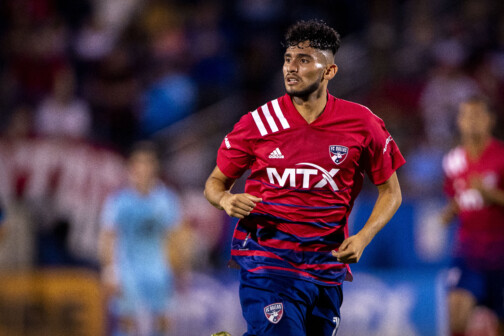
Close observers of MLS tend to agree the FC Dallas Academy stands among the class of the league, along with the developmental arms of Philadelphia Union and the New York Red Bulls. Part of that is geography and demographics. North Texas is stocked with great athletes and diverse cultures that embrace soccer. But FC Dallas has scouted players from club affiliates in Monterrey, El Paso, and elsewhere (Chris Richards, now at English Premier League side Crystal Palace after initially being sold to German powerhouse Bayern Munich, came from Alabama). The organization—from behind-the-scenes technical directors to head coaches like Nico Estévez and Luchi Gonzalez (Estevez’s predecessor and formerly the director of the FC Dallas Academy)—has also bought into development at all levels, even if it means playing a less-experienced first-team roster. FC Dallas debuted Paxton Pomykal when he was 17 and Reggie Cannon when he was 18. Ferreira, at age 16 in 2017, became the youngest player to score a goal in an MLS game since one-time phenom Freddy Adu.
“All these guys were one day in the academy, and the next day they were in MLS and competing at the MLS level,” Namazi says.
FC Dallas has signed a total of 35 homegrown players, the highest number in MLS, the most recent of whom are Nolan Norris and Tarik Scott. Scott, a 17-year-old, started with FC Dallas youth teams about 10 years ago before joining the academy at 12. As soon as Scott and his older brother, Malik (who was enrolled in the academy and now plays for the University of Tulsa), showed prowess in the sport, their mother encouraged them to audition for the FC Dallas system, preferring its methods despite knowing other clubs may have given them more playing opportunities and championships early on.
“We knew that no matter what happened, even if we lost the game or whatever the case may be, FC Dallas would still be a better club for our development,” Tarik Scott says.
The FC Dallas Academy has become perhaps best known for something only the most devout soccer fans would notice: exporting talent.
McKennie, for instance, declined a homegrown contract in 2016, opting to sign with the German team FC Schalke 04. He now plays in Italy’s Serie A for Juventus, one of the world’s most storied clubs. Cannon played for three seasons for FC Dallas before the team transferred him to Portugal’s Boavista F.C. He was replaced by Bryan Reynolds, whom the club sold for an even bigger fee to a different Italian powerhouse, A.S. Roma. Over the last couple years, Hunt says, FC Dallas has earned roughly $37.5 million in transfer fees, much of which came from Pepi’s transfer in January.
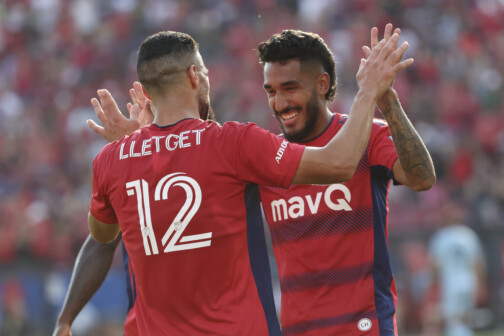
This is the conundrum to having a great academy in a country with a less distinguished professional league than, say, Serie A or the English Premier League: the top academy talents leave as they enter their prime years, making it harder to win over local fans and win an MLS Cup. But Hunt says the transfer revenues have been reinvested into further building up the academy and signing players to the first team, such as USMNT veterans Paul Arriola and Sebastian Lletget (neither of whom made the final World Cup roster). Varas views the transfers as a “return on investment” and incentive to continue building up academies in the future—not just in Dallas but across the country.
“What I see is other academies pushing forward and where everybody is trying to match the other,” Varas says. “We’re going to be able to generate consistently competitive [national] teams for the foreseeable future because of that infrastructure.”
The presence of McKennie, Acosta, Moore, and Ferreira on the U.S. World Cup roster should provide the same incentive. Seeing someone like McKennie in Qatar shows the current and future members of the FC Dallas Academy that yet another level of development—the ultimate level—could be theirs in the future. This World Cup, Hayden says, will be “great for Weston. But it’s much better for the 1,000 kids that come after.” And someday, if USMNT ever reaches the heights this country has long dreamed of, you can expect a few of those 1,000 to have their turn raising the World Cup Trophy.


